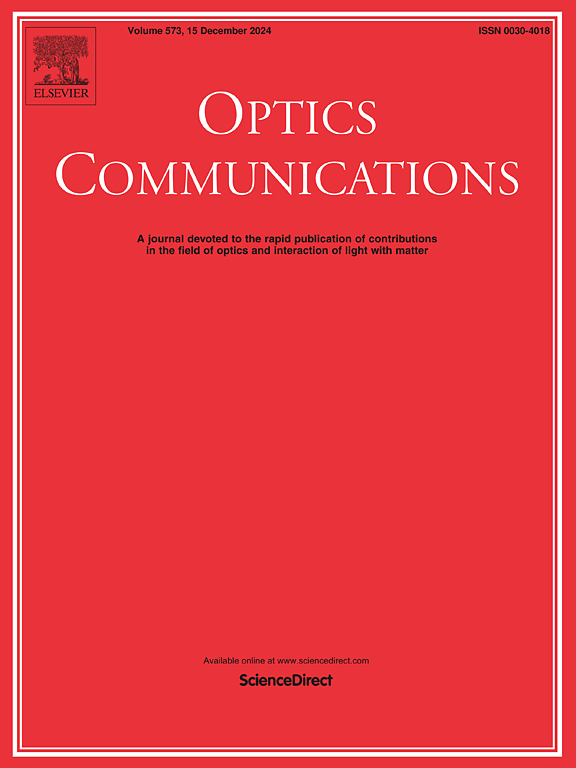Incoherent, chimera and coherent behaviors in ring of locally and array of non-locally coupled current-modulated edge-emitting semiconductor lasers
IF 2.2
3区 物理与天体物理
Q2 OPTICS
引用次数: 0
Abstract
The investigation in this paper on the ring of locally and the array of non-locally coupled current-modulated (CM) edge-emitting semiconductor lasers (EESLs) is numerical. The dynamical characteristics of a ring of locally coupled CMEESLs display incoherent and chimera behaviors for small values of coupling strength while coherent behaviors are observed for large values of coupling strength. The dynamical characteristics of a circlet of non-locally twained CMEESLs reveal that the twaining force is of great importance when considering the coherent and incoherent characteristics of the nodes found inside the circlet. Considering the twaining force in an infinitesimal interval, the array of non-locally coupled CMEESLs displays chimera states. Incrementing the twaining force, the array of non-locally coupled CMEESLs is in a state of coherency and a total destruction of the chimera states is observed. The findings in this paper suggest that the ring of locally and array of non-locally coupled CMEESLs under study could have significant implications for applications in neuro-inspired computing, particularly in neuromimetic computing.
局部耦合电流调制边缘发射半导体激光器环和阵列中的不相干、嵌合和相干行为
本文对局部耦合的环形和非局部耦合的电流调制(CM)边缘发射半导体激光器(EESLs)阵列进行了数值研究。局部耦合 CMEESL 环形的动态特性在耦合强度较小时表现出不连贯和嵌合行为,而在耦合强度较大时则表现出连贯行为。非局部耦合 CMEESL 环状体的动力学特性表明,在考虑 环状体内部节点的相干和不相干特性时,耦合力非常重要。考虑到无穷小区间内的扭转力,非局部耦合 CMEESL 阵列显示出嵌合状态。随着扭转力的增大,非局部耦合 CMEESL 阵列处于一致性状态,并观察到嵌合态的完全破坏。本文的研究结果表明,所研究的局部耦合 CMEESL 环和非局部耦合 CMEESL 阵列可能对神经启发计算,特别是神经模拟计算的应用具有重要意义。
本文章由计算机程序翻译,如有差异,请以英文原文为准。
求助全文
约1分钟内获得全文
求助全文
来源期刊

Optics Communications
物理-光学
CiteScore
5.10
自引率
8.30%
发文量
681
审稿时长
38 days
期刊介绍:
Optics Communications invites original and timely contributions containing new results in various fields of optics and photonics. The journal considers theoretical and experimental research in areas ranging from the fundamental properties of light to technological applications. Topics covered include classical and quantum optics, optical physics and light-matter interactions, lasers, imaging, guided-wave optics and optical information processing. Manuscripts should offer clear evidence of novelty and significance. Papers concentrating on mathematical and computational issues, with limited connection to optics, are not suitable for publication in the Journal. Similarly, small technical advances, or papers concerned only with engineering applications or issues of materials science fall outside the journal scope.
 求助内容:
求助内容: 应助结果提醒方式:
应助结果提醒方式:


